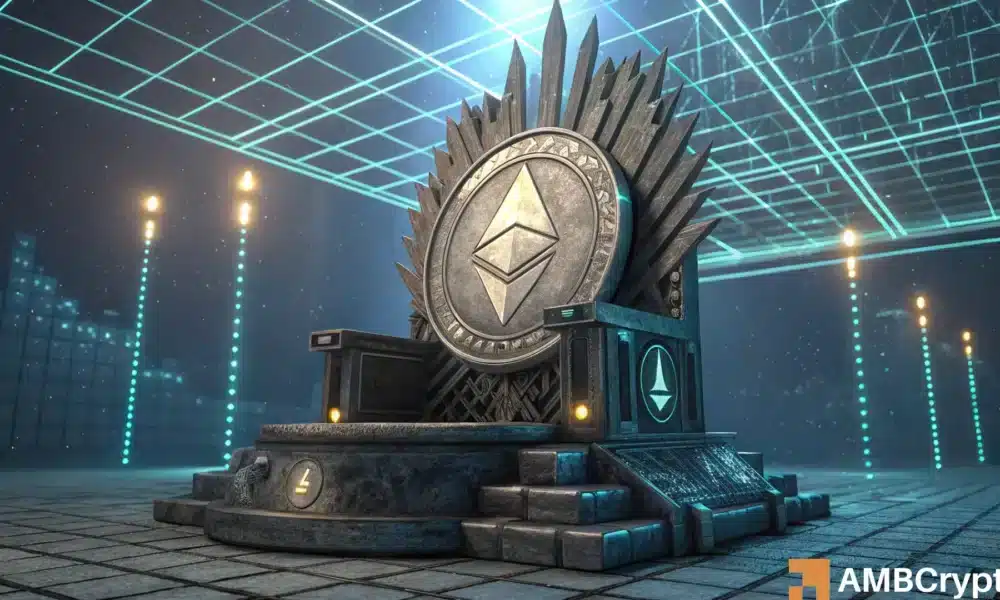The Evolving Landscape of DeFi: Is Ethereum Losing Its Dominance?
Introduction to Ethereum’s DeFi Dominance
For years, Ethereum (ETH) has stood at the forefront of the decentralized finance (DeFi) revolution, claiming an impressive 67.65% share of total DeFi activity as recorded by DeFiLlama. However, recent statistics indicate that Ethereum’s long-standing dominance may be facing challenges from emerging competitors. As platforms like Solana (SOL) and Binance Smart Chain (BSC) gain traction, the question remains: How long can Ethereum maintain its position in the rapidly evolving DeFi ecosystem?
Competitors on the Rise
Despite Ethereum’s significant market presence, competitors are inching closer. Solana, with a 8.9% share of DeFi activity, has shown remarkable growth in both user engagement and developer participation. Meanwhile, BNB and Bitcoin (BTC) have also increased their footprints in the DeFi space, holding shares of 6.67% and 6.75%, respectively. This shift signifies not only an increase in active users on competing platforms but also highlights a potential diversification in the DeFi landscape. As these competitors gain momentum, Ethereum’s lead may continue to shrink, challenging its supremacy in the sector.
Ethereum’s Current Market Position
According to CoinGecko, Ethereum remains the second-largest smart contract platform, boasting a market cap of approximately $420.7 billion alongside a 24-hour trading volume of $31.6 billion. However, the recent trading fluctuations, including a 2.5% dip on a particular day, suggest that even established tokens like ETH are vulnerable to market dynamics. Despite a weekly gain of 5.6%, Ethereum must contend with rising stars like Solana and BNB, who are actively vying for a larger piece of the DeFi pie.
The Stablecoin Segment: A New Battleground
As Ethereum continues to dominate the stablecoin landscape with a 55.55% market share, the data also reveals that this dominance is showing signs of decline. TRON (TRX) has gained substantial ground, currently capitalizing on a significant 25.78% of the stablecoin market, while BSC and Solana follow closely with shares of 4.42% and 4.36%, respectively. The steady growth of TRON in the stablecoin sector illustrates a shift in investor interest and the potential for future disruption within the traditional power structures of DeFi.
Shifting User Activity and Developer Engagement
A notable shift in user activity is also prominent in the competitive landscape. Solana has increasingly outpaced Ethereum regarding daily active addresses and transaction volume, reflecting a growing preference among users for its faster and more efficient network. Furthermore, when examining developer activity, Ethereum’s development score stands at 14.3, while Solana boasts a score of 21.5, revealing a robust community of developers flocking to work on Solana’s innovative infrastructure. This upward trend in both user and developer engagement signifies a meaningful change in market momentum, propelled by the advantages offered by competing platforms.
Conclusion: The Future of Ethereum and DeFi
As Ethereum faces rising challenges from competitive blockchain platforms, the dynamics of the DeFi landscape appear to be in flux. While it retains a significant lead in terms of market share and established infrastructure, growing alternatives like Solana, TRON, and BNB are reshaping the future of decentralized finance. With increasing user activity and robust developer engagement on these competing platforms, Ethereum must adapt to maintain its relevance and leadership position in this rapidly changing environment. The future of DeFi is undoubtedly bright, but will Ethereum continue to shine, or will new contenders rise to claim the throne? Only time will tell.


